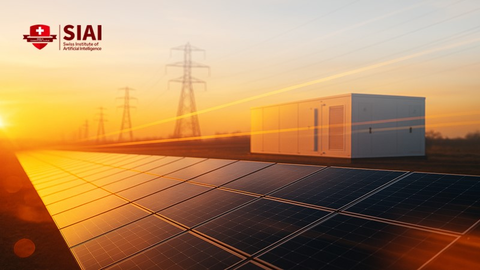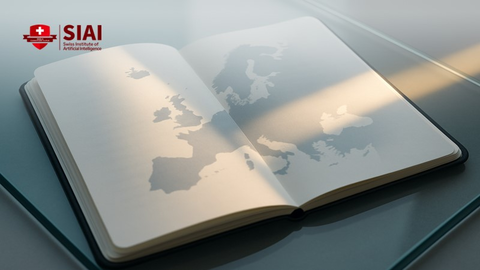Pacific Protein Hegemony: How East Asia and Oceania’s Blue-Food Boom Is Re-drawing Global Food Politics
Input
Modified
This article was independently developed by The Economy editorial team and draws on original analysis published by East Asia Forum. The content has been substantially rewritten, expanded, and reframed for broader context and relevance. All views expressed are solely those of the author and do not represent the official position of East Asia Forum or its contributors.
In 2024, more than eight out of every ten farmed fish on the planet were raised in waters managed by governments stretching from Hokkaidō to Hobart. That single statistic overturns half a century of grain-centric food-security doctrine: the axis of global protein has swung away from the American corn belt and Europe’s pasturelands toward the Indo-Pacific’s muddy ponds, volcanic bays, and deep-water cages. This geographic pivot already shapes soybean futures, foreign exchange flows, carbon markets, and higher-education syllabi—and it is happening faster than most policy models predicted.

The Statistical Tectonic Shift
The State of World Fisheries and Aquaculture 2024 confirms that global aquaculture output hit an unprecedented 130.9 million tonnes in 2022, of which 94.4 million were aquatic animals rather than algae. Dig one layer deeper, and the center of gravity becomes starker: Asia alone produced 119.7 million tonnes—91.4% of the world total—while Oceania added roughly a quarter-million tonnes of high-value sashimi species. East Asia and Oceania accounted for almost 120 million tonnes, leaving a slender 4.3 million tonnes to Europe and North America and barely 7 million tonnes to the rest of the world. Those proportions look less like a growth spurt and more like a tectonic relocatement of comparative advantage when one recalls that the 2015 FAOSTAT baseline used in Naylor et al.’s Nature Communications model already showed the Indo-Pacific producing twice the farmed tonnage of the Atlantic economies. By 2024, the ratio had blown out to 4.3 to 1, confirming a structural-not cyclical—realignment that governs everything from feed-grain imports into Guangzhou to the cold-chain corridors piping live grouper from Palawan to Shenzhen at dawn.

Demand Dynamics Anchored in the 2015 Baseline
The Indo-Pacific surge, a significant and urgent development, originates in two reinforcing elasticities locked into the 2015 FAOSTAT data underpinning the blue-food demand model. First, income elasticity for fish runs about 0.65 in lower-middle-income Asian economies, gradually sliding toward 0.40 as real wages climb. Second, the price elasticity for mainstream species such as tilapia is just –0.42. Put the two together, and you get asymmetric momentum: a 5% rise in Indonesian household income lifts demand by 3.2%, easily offsetting a 5% price increase that would shave just 2% off appetite. The effect multiplies inside China, where high-speed rail and refrigerated trucking have collapsed farm-to-fork times from Guangdong ponds to Chongqing supermarkets from 48 hours to 22. Official survey data show that inland per-capita fish intake rose 1.4 kg between 2020 and 2024, and National Development and Reform Commission targets imply disposable income growth of roughly 5% a year. Those two facts together generated an extra 410,000 tonnes of freshwater fish demand in 2024 alone—approximately the whole of Thailand’s aquaculture output—tightening feed-grain markets and anchoring world white-fish prices in yuan-denominated coastal auctions instead of dollar- or euro-centric commodity hubs. Australia and New Zealand play a premium-niche role, shipping sashimi-grade tuna, kingfish, and mussels into East-Asian processing plants as tariff-free, high-margin inputs, proving that small tonnage can carry outsized economic weight when value per kilogram eclipses US$12 at dock price.
Carbon Arithmetic and Environmental Dividends
Life-cycle analysis alters the narrative from mere tonnage to climate arithmetic. A 2020 Scientific Reports study calculates that common fin fish such as carp and tilapia emit a modest 3–4 kg CO₂-equivalent per edible kilogram, while bivalves come in at a near-negligible 0.6 kg. Feedlot beef, by contrast, tops 60 kg CO₂e / kg. Suppose one converts East Asia’s 54 million tons of freshwater in 2024 into avoided red meat protein. In that case, the implied carbon saving is around 2.7 gigatonnes CO₂e—more than the entire EU economy emitted last year. That wedge makes cultured fish, not a boutique sustainability option, but a core mitigation instrument that underwrites national net-zero pathways. Japan’s latest Basic Fisheries Plan folds mariculture expansion into its domestic carbon market, granting coastal prefectures salable offsets when they replace diesel aerators with solar-powered recirculating systems. Indonesia went one step further by floating the world’s first publicly offered sovereign blue bond in May 2023, raising ¥20.7 billion for mangrove-linked pond upgrades that double as coastal defense buffers.

Financial Engineering as Food-Security Insurance
Capital markets have already priced the carbon-nutrition dividend, a significant and economically impactful development. Asia-Pacific blue-economy bond issuance expanded at a blistering 38% compound rate between 2021 and 2024, surpassing green-bond growth by five points. A US$250 million kelp-farm tranche from a Vietnamese coastal province cleared eight basis points below U.S. Treasuries because it bundled nutrient-density indicators with cradle-to-gate carbon data, qualifying for triple-green labels in Japanese and European ESG registers. The East Asia Forum column of 13 June 2025 argues persuasively that such blended-finance vehicles are fast becoming the hinge that converts biological bounty into political resilience by locking in pathogen monitoring, labor audits, and biodiversity metrics that domestic regulators alone struggle to enforce. The upshot: investors now treat farmed fish like sovereign-wealth funds once treated oil—an indispensable yield underwritten by scarce natural capital.
Atlantic Exposure and the New Vulnerability Equation
Europe and North America mirror the Indo-Pacific growth story only on the plate, not at the farm gate. The 2024 EU Fish Market report pegs average EU seafood intake at 23.5 kg live-weight equivalent per capita. Yet, the bloc’s self-sufficiency rate sits below 40% and falls to single digits for flagship species like salmon and tuna. Meeting demand, therefore, relies disproportionately on imports that now account for 72% of the market by value, leaving retail prices tied to Qingdao shrimp auctions and Ho-Chi-Minh pangasius quotes rather than EU production costs. Across the Atlantic, the USDA’s aquaculture dashboard shows a US$20.6 billion seafood trade deficit in 2024, the third-worst in modern records despite a modest pandemic-era bump in domestic catfish output. That mismatch is more than a trade ledger: a strategic exposure. A typhoon that takes out Guangdong tilapia hatcheries or an El Niño that slashes Peruvian anchoveta—vital for Asian fishmeal—would ricochet into Parisian and New York grocery prices within weeks. Unlike grain, neither Brussels nor Washington maintains public seafood reserves, and both jurisdictions are hampered by litigation-heavy permitting regimes that preclude rapid aquaculture scale-up. In effect, Atlantic diets ride on Pacific weather—a spectacular reversal of the soybean era in which Asian plates depended on Iowa yields.
Inequality, Labour and Indigenous Stewardship
Productivity miracles sometimes mask social inequities. Pacific Island nations lie geographically at the heart of the blue-food boom yet often capture the thinnest margins, exporting raw products to foreign-owned processors while bearing disproportionate biosecurity risk. The 2050 Strategy for the Blue Pacific Continent estimates that at least US$1 billion of cold-chain, diagnostic, and brood-stock infrastructure is required merely to lift regional yields to half the Asian average. Current donor commitments cover barely one-quarter of that figure, casting doubt on whether island economies will climb the value chain.
Labor conditions echo those inequities. International Labour Organization surveys suggest that 17% of workers in Asian seafood plants are migrant women on temporary visas, many lacking heat-stress safeguards precisely as climate change intensifies tropical extremes. Innovative debt structures are beginning to respond: coupon step-ups in Indonesian blue-bond covenants are triggered if third-party audits discover systematic wage theft or unsafe dormitories, tying the cost of capital directly to human rights performance. Finally, the sustainability ledger cannot be balanced without Indigenous knowledge. Australian First Nations communities have maintained shellfish reefs and tidal stone traps for millennia; Polynesian villages run rāhui closure systems that operate as proto-marine reserves. Binding that ancestral science into statutory frameworks is more than ethical courtesy—it is pathogen insurance, biodiversity hedging, and cultural survival rolled into one.
Curriculum and Policy Imperatives
Three curricular shifts follow from the new geography of protein. First, the antiquated meat-milk-grain triad must yield a four-pillar model that gives blue foods equal billing. A macro-economics module might task students with modeling how a 5% rise in Chinese incomes, given elasticity 0.65, would shock tilapia futures; an environmental science class could contrast the 60 kg CO₂e footprint of beef with the 3 kg of carp; a development-finance seminar should unpack the term sheets of Indonesia’s sovereign blue bond alongside the EU’s Green Bond Standard. Second, trade theory needs retooling. Comparative-advantage frameworks rarely account for environmental externalities, yet a Sulawesi shrimp that sequesters mangrove carbon diverges dramatically from its private cost curve. Negotiators schooled only in tariffs risk overlooking the emerging carbon-nutrition premium that Indo-Pacific exporters are beginning to monetize via life-cycle labels. Third, crisis-response planning must embrace aquatic protein. COVID-19 exposed vulnerabilities in long-haul supply chains; a climate-intensified cyclone season could do worse. Strategic diversification into recirculating systems near cities and shellfish farming in nutrient-rich estuaries deserves the same political urgency as emergency grain stockpiles.
Teaching the Tide
Twentieth-century textbooks parked food security on land and consigned oceans to footnotes. Twenty-first-century data erase that map: four of five farmed fish now come from East Asian or Oceanian waters. At the same time, Western eaters import fillets embedded with Indo-Pacific climate risk. Carbon arithmetic, bond-market innovation, and geopolitical leverage all flow from that maritime fulcrum. Ignore the tide, and Western diets drift ever deeper into dependency on supply chains they scarcely understand. Master the numbers—production volumes, elasticities, blue-bond term sheets, Indigenous stewardship protocols—and tomorrow’s leaders can steer toward a resilient, low-carbon protein future. The tide has turned; it is time both the policy handbooks and the classroom syllabi turned with it.
The original article was authored by Shoba Suri and Subhasree Ray. The English version, titled "Blue food making waves for sustainability and security in East Asia," was published by East Asia Forum.
References
Australian Department of Agriculture, Fisheries and Forestry. Aquaculture Statement 2024. Canberra, 2024.
East Asia Forum. “Blue Food Making Waves for Sustainability and Security in East Asia.” 13 June 2025.
European Market Observatory for Fisheries and Aquaculture (EUMOFA). The EU Fish Market — 2024 Edition. Brussels, 2024.
Food and Agriculture Organization. “FAO Report: Global Fisheries and Aquaculture Production Reaches a New Record High.” 2024.
Food and Agriculture Organization. The State of World Fisheries and Aquaculture 2024. Rome: FAO, 2024.
MacLeod, M. J. et al. “Quantifying Greenhouse-Gas Emissions from Global Aquaculture.” Scientific Reports 10 (2020): 11679.
Naylor, R. L. et al. “Blue Food Demand across Geographic and Temporal Scales.” Nature Communications 12 (2021): 5413.
Pacific Islands Forum Secretariat. 2050 Strategy for the Blue Pacific Continent. Suva, 2022.
Reuters. “Aquafarming Becomes Main Global Source for Fish, U.N. Food Agency Says.” 7 June 2024.
UNDP Indonesia. “Indonesia Launches the World’s First Publicly Offered Sovereign Blue Bond with UNDP’s Support.” 31 May 2023.
USDA Economic Research Service. “Aquaculture: U.S. Trade Deficit Hits US$20.6 Billion in 2024.” 2025.





















